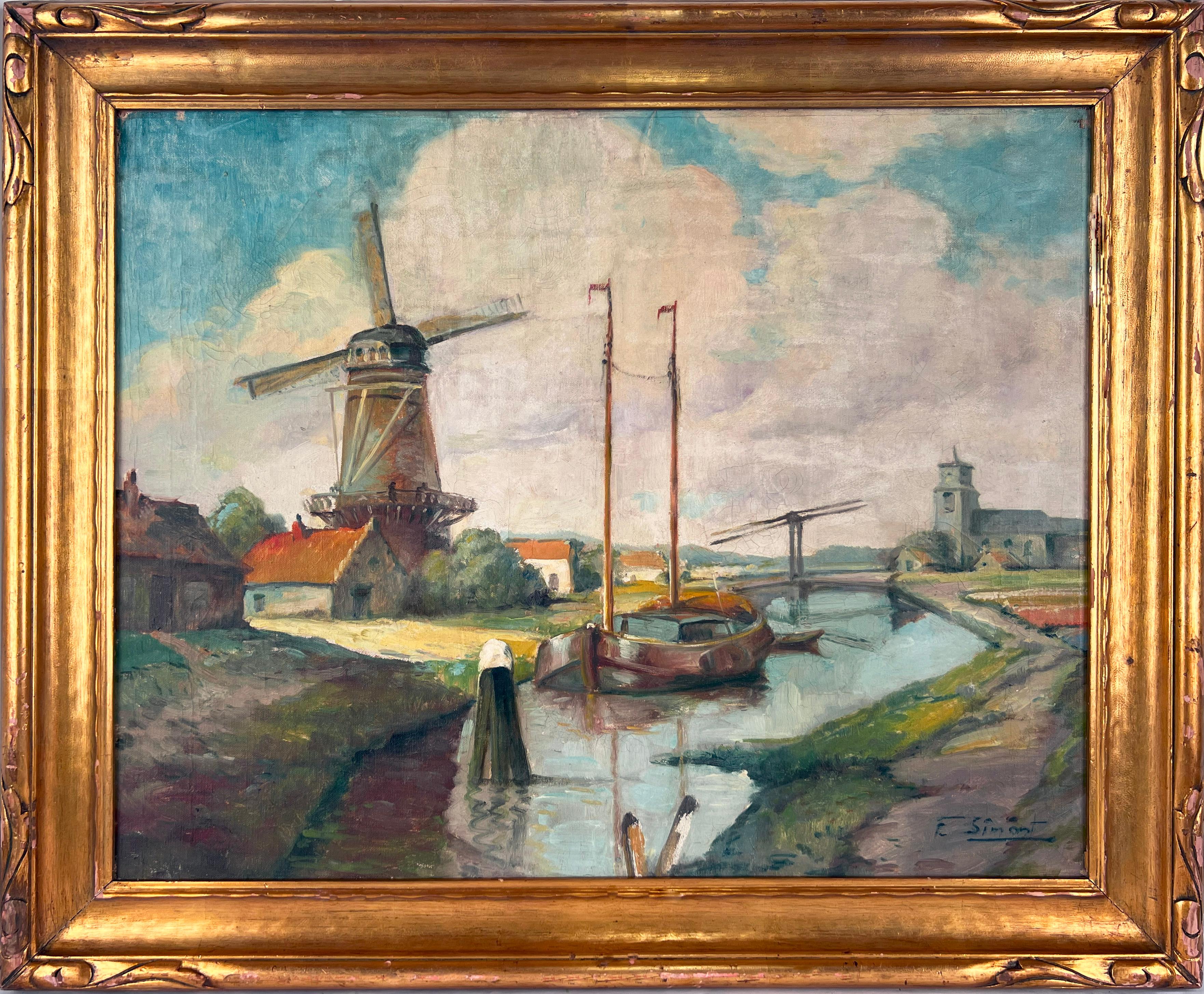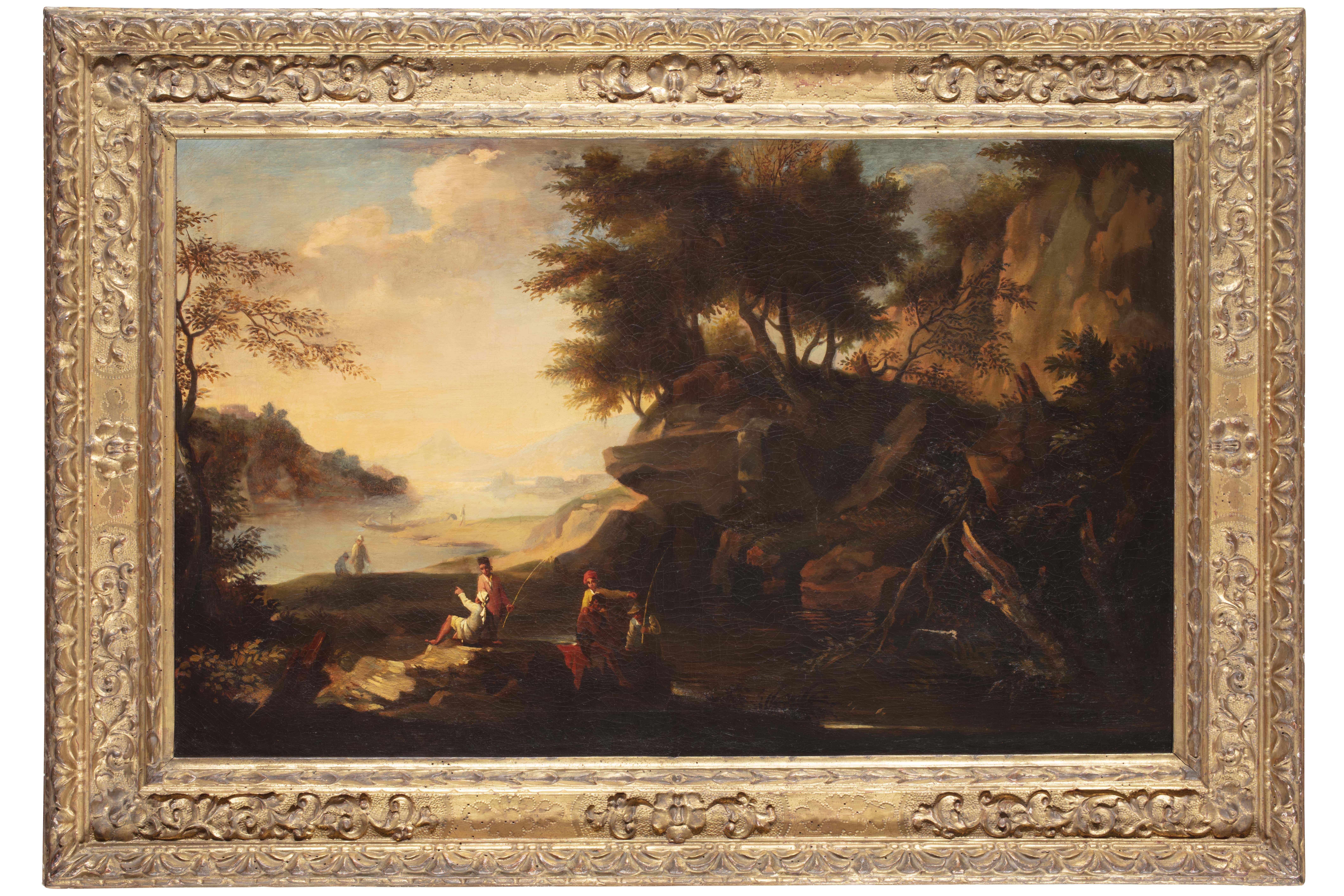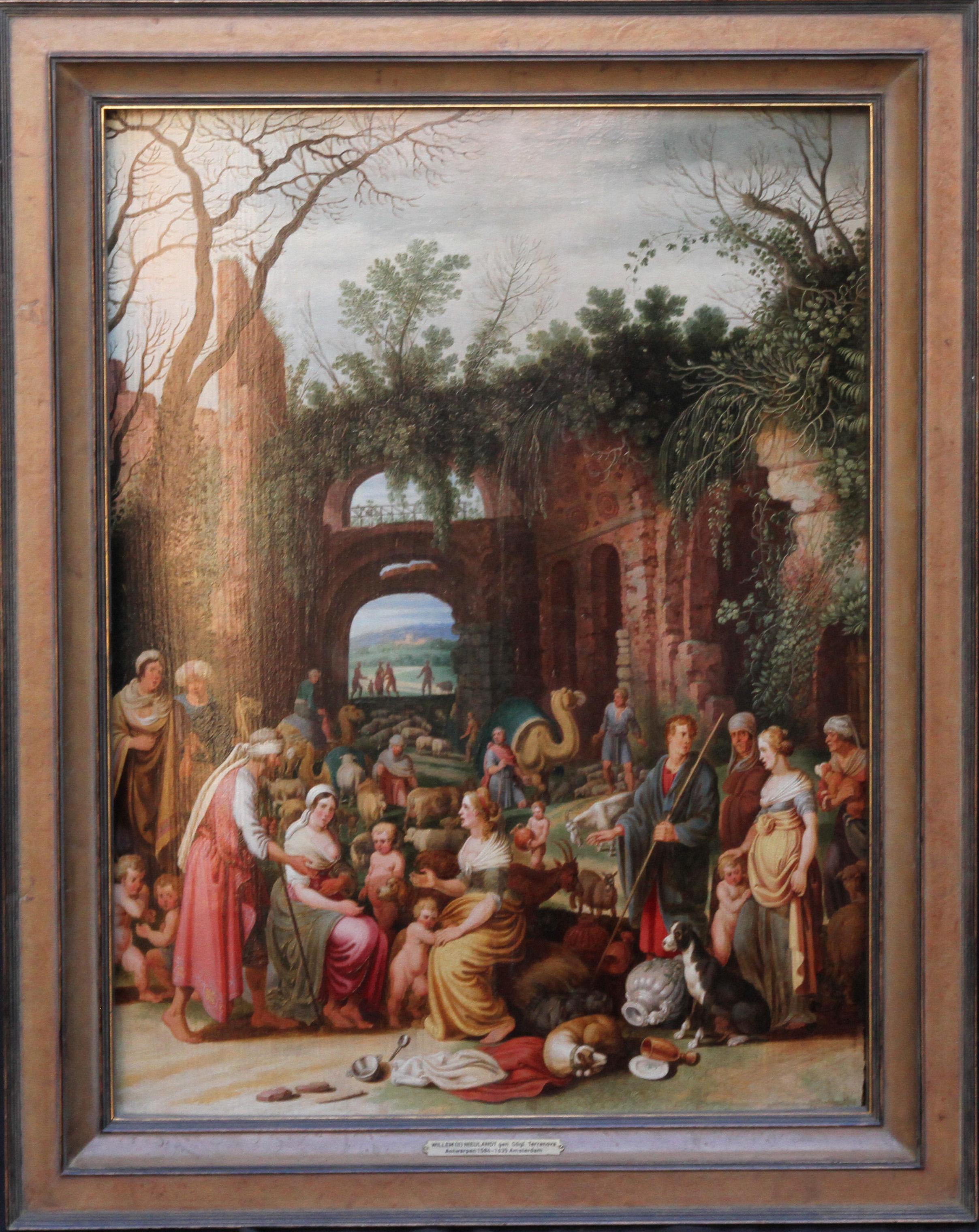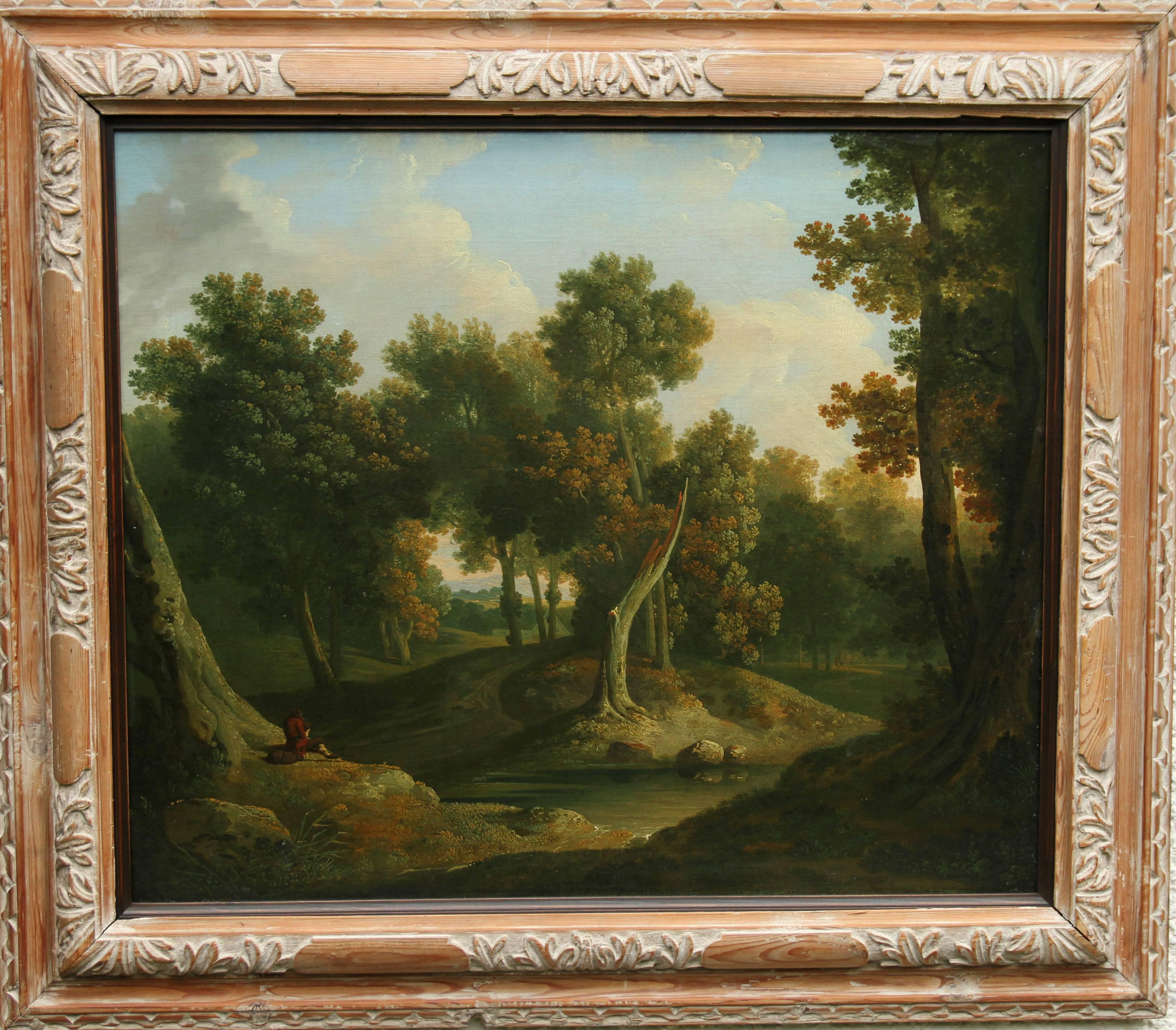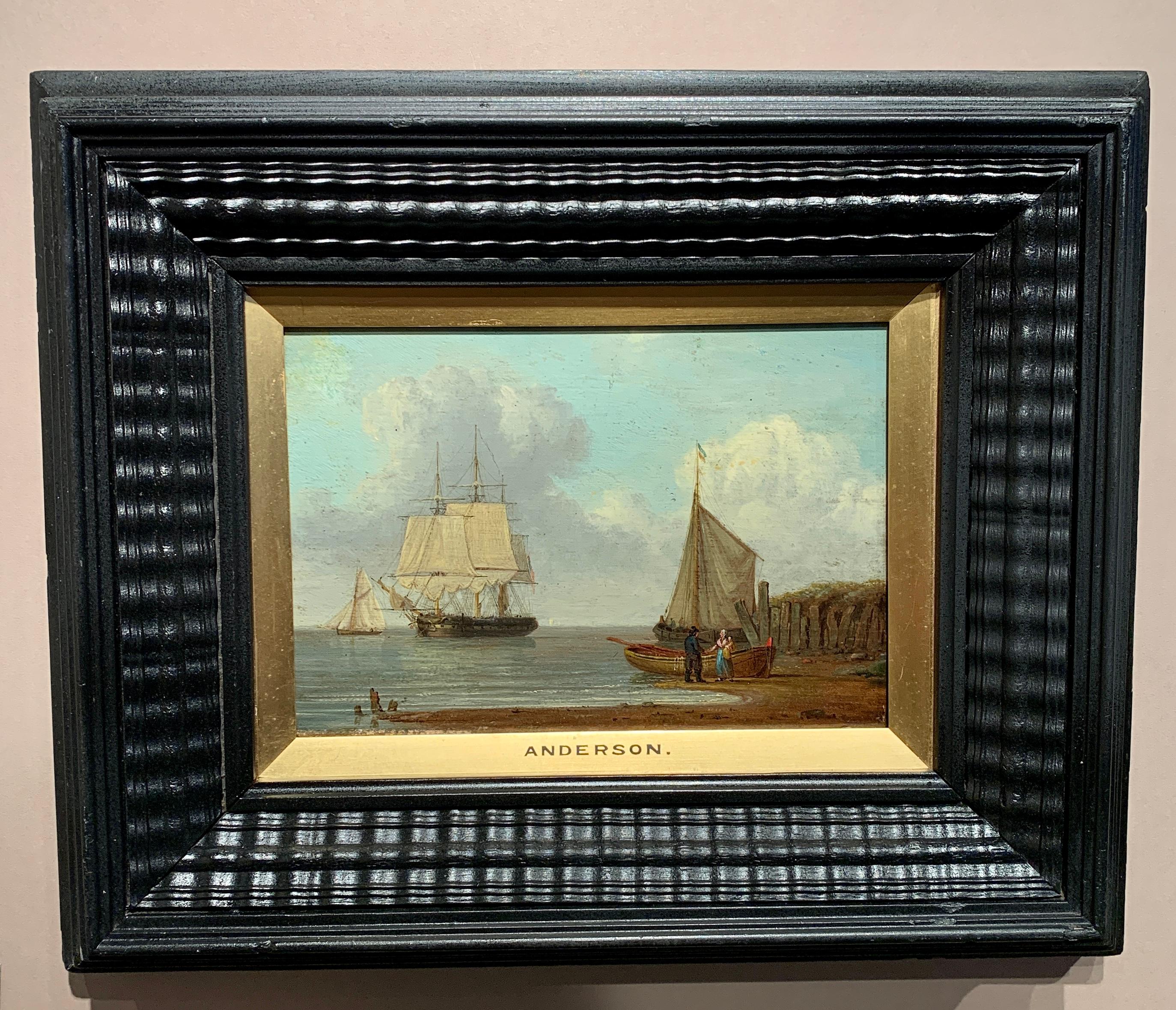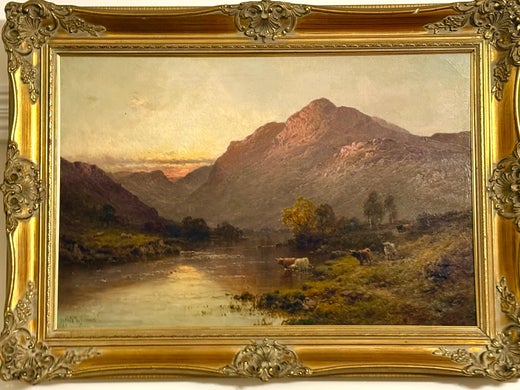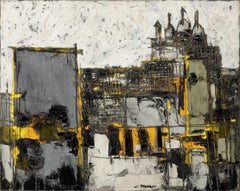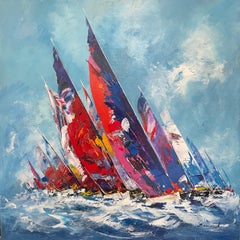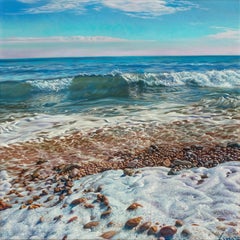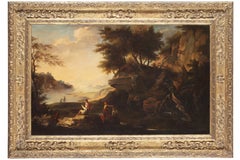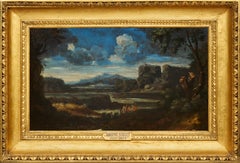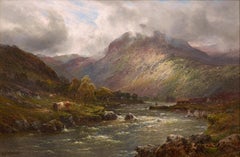
Scottish 19th Century Landscape painting ‘The Highlands’ Alfred de Breanski Snr
Alfred de Breanski Sr.Scottish 19th Century Landscape painting ‘The Highlands’ Alfred de Breanski Snr24” x 36”
24” x 36”
About the Item
- Creator:Alfred de Breanski Sr. (1852 - 1928, British)
- Creation Year:24” x 36”
- Dimensions:Height: 24 in (60.96 cm)Width: 36 in (91.44 cm)
- Medium:
- Movement & Style:
- Period:
- Condition:
- Gallery Location:Shrewsbury, GB
- Reference Number:1stDibs: LU8125919902
Alfred de Breanski Sr.
Widely regarded as one of England’s most accomplished landscape artists, British painter Alfred de Breanski Sr. is known by collectors for his realistic depictions of the rugged, isolated beauty of the Scottish Highlands and Welsh mountains.
Born in 1852 in Greenwich, England, de Breanksi grew up in an artistic family. His elder brother was the noted seascape painter Gustave de Breanski and his younger sister Julie trained as an artist.
Many of de Breanksi’s paintings feature animals such as sheep and cattle, which he painted grazing along the grassy banks of the River Thames or in the undulating fields of Wales and Scotland. He was influenced by the likes of renowned British painter John Constable, making similar use of texture, light and color in his landscape paintings.
De Breanski debuted his works at the Royal Academy in London in 1872, where he continued to exhibit until 1918. He also showcased at the Royal Institute of Oil Painters and the Royal Cambrian Academy in Wales.
In 1873, de Breanski married Welsh painter Annie Roberts, and together they had seven children. Two of their children — Alfred de Breanski Jr. and Arthur de Breanski — would follow their parents’ footsteps and become artists. In 1880, de Breanksi became a Freeman of the City of London, and in 1928, he died in London.
Today, de Breanski’s paintings can be seen in museums and galleries throughout Britain, including at the Laing Art Gallery in Newcastle upon Tyne, the Southampton City Art Gallery and the Brighton Museum and Art Gallery in Brighton and Hove.
On 1stDibs, find a range of Alfred de Breanski Sr. paintings.
More From This Seller
View All20th Century Abstract Landscape Paintings
Canvas, Oil
20th Century Abstract Impressionist Landscape Paintings
Canvas, Oil
21st Century and Contemporary Contemporary Abstract Paintings
Canvas, Oil
21st Century and Contemporary Contemporary Landscape Paintings
Panel, Oil
21st Century and Contemporary Contemporary Landscape Paintings
Panel, Oil
Late 19th Century Impressionist Landscape Paintings
Canvas, Oil
You May Also Like
1950s Old Masters Landscape Paintings
Linen, Oil, Stretcher Bars
17th Century Old Masters Landscape Paintings
Canvas, Oil
1650s Old Masters Landscape Paintings
Oil
17th Century Old Masters Figurative Paintings
Oil
1650s Old Masters Figurative Paintings
Oil
18th Century Old Masters Landscape Paintings
Oil
